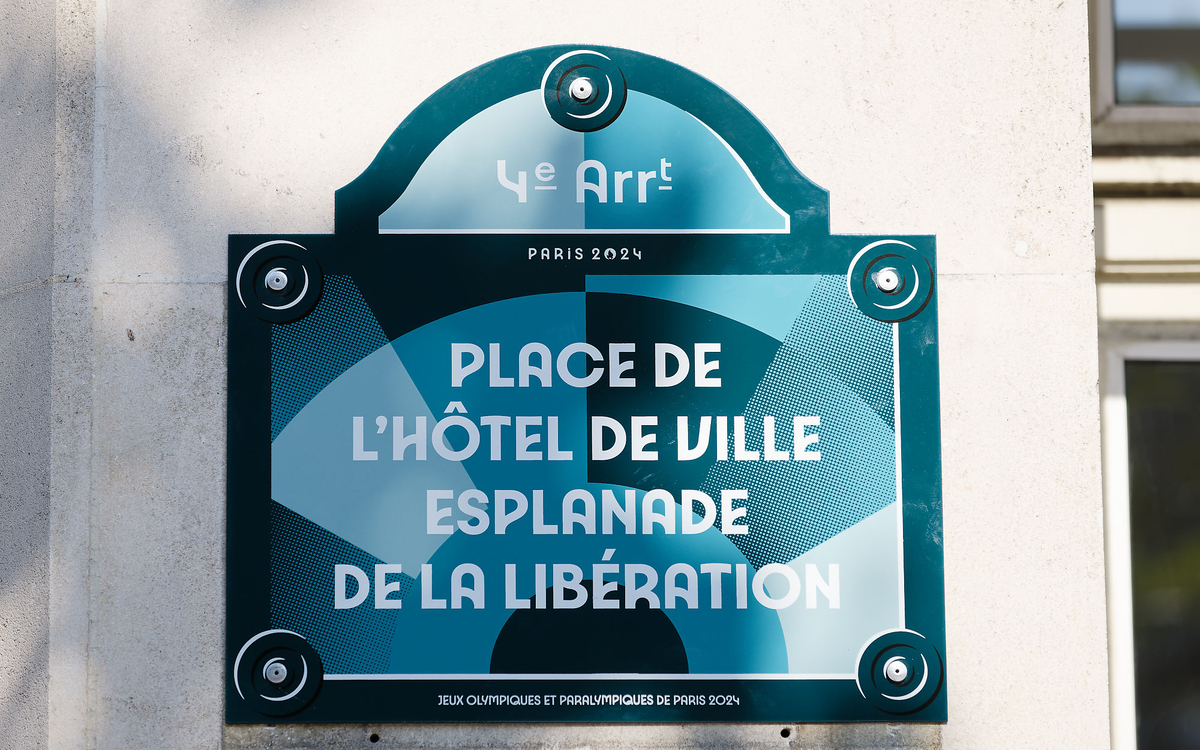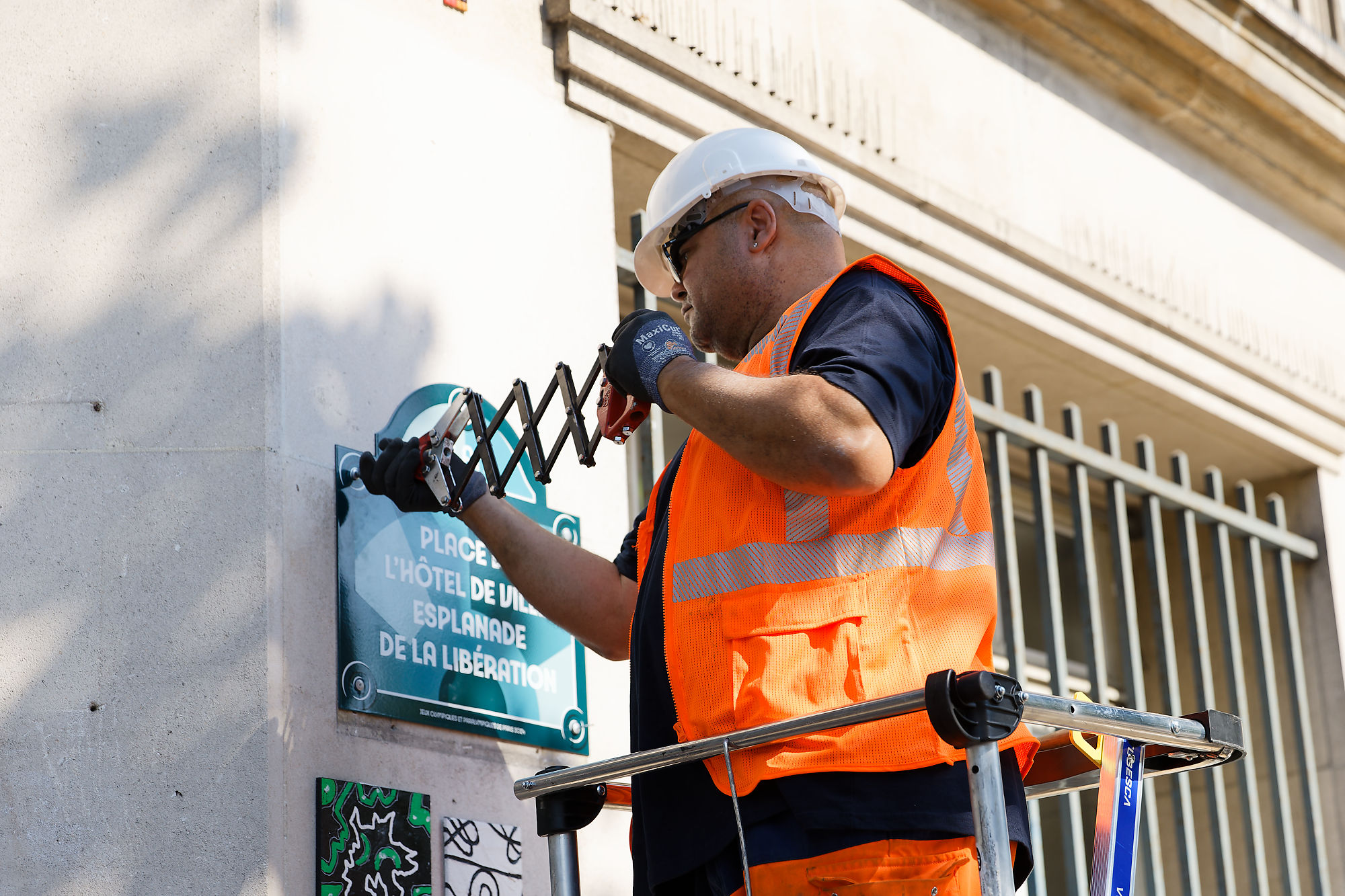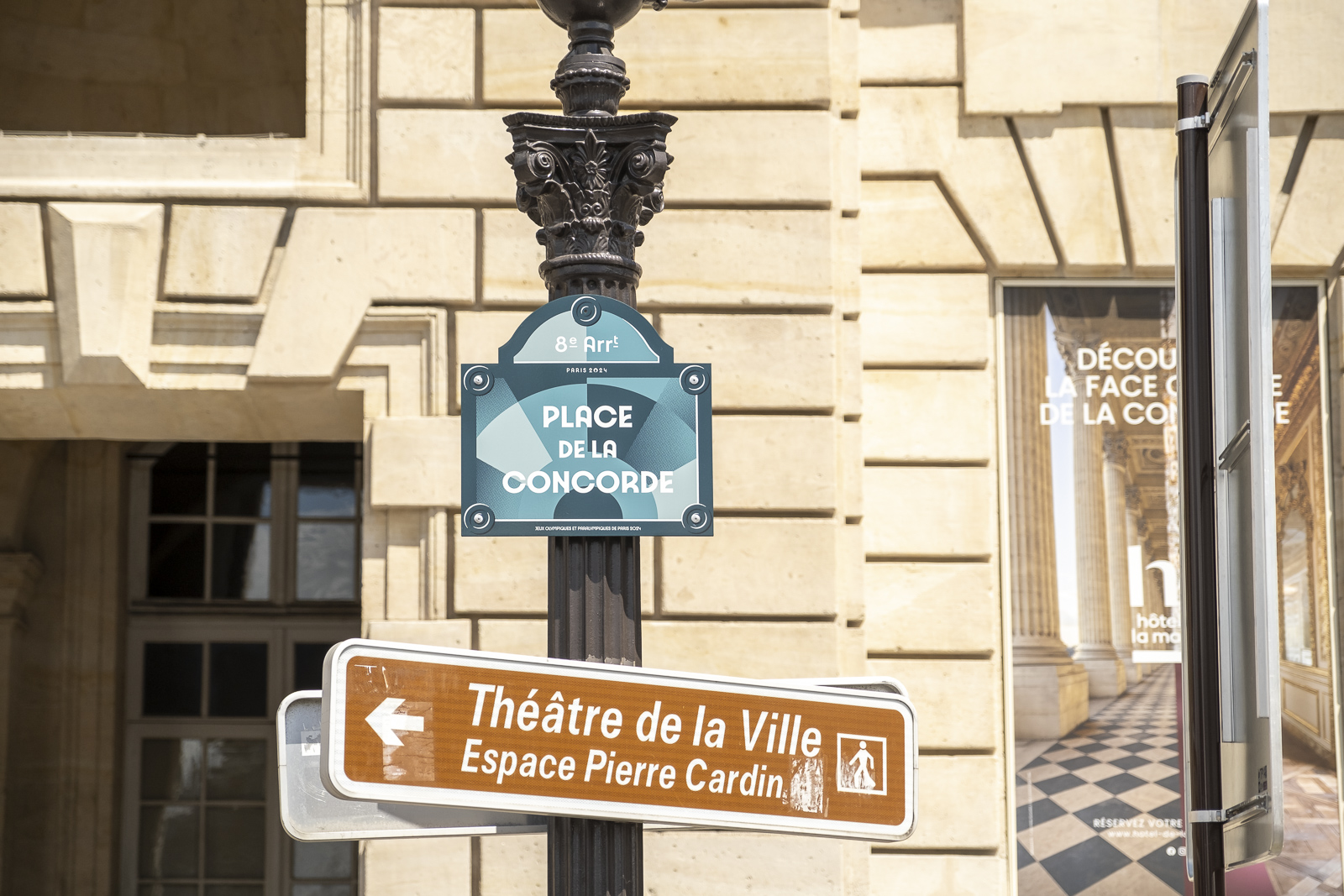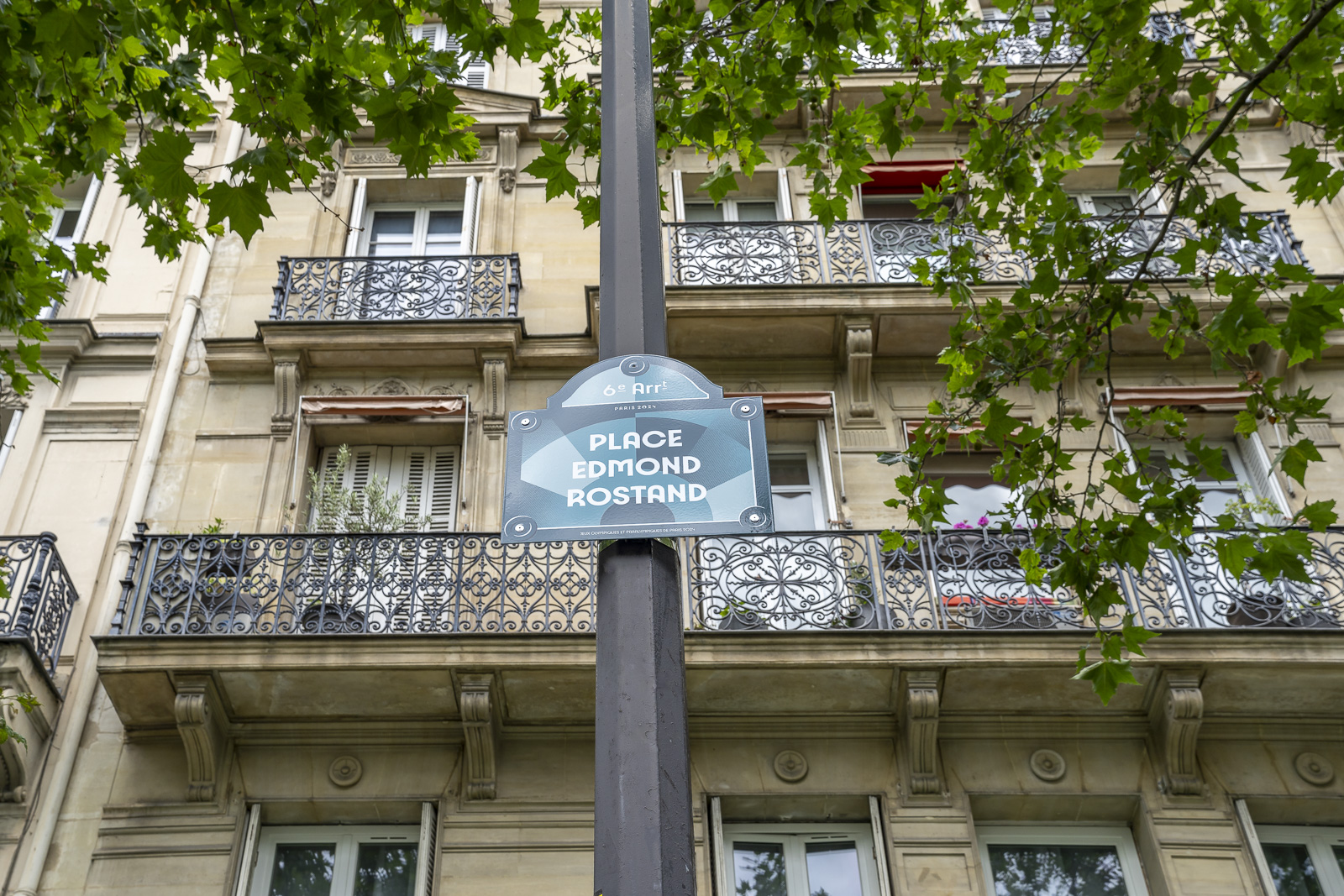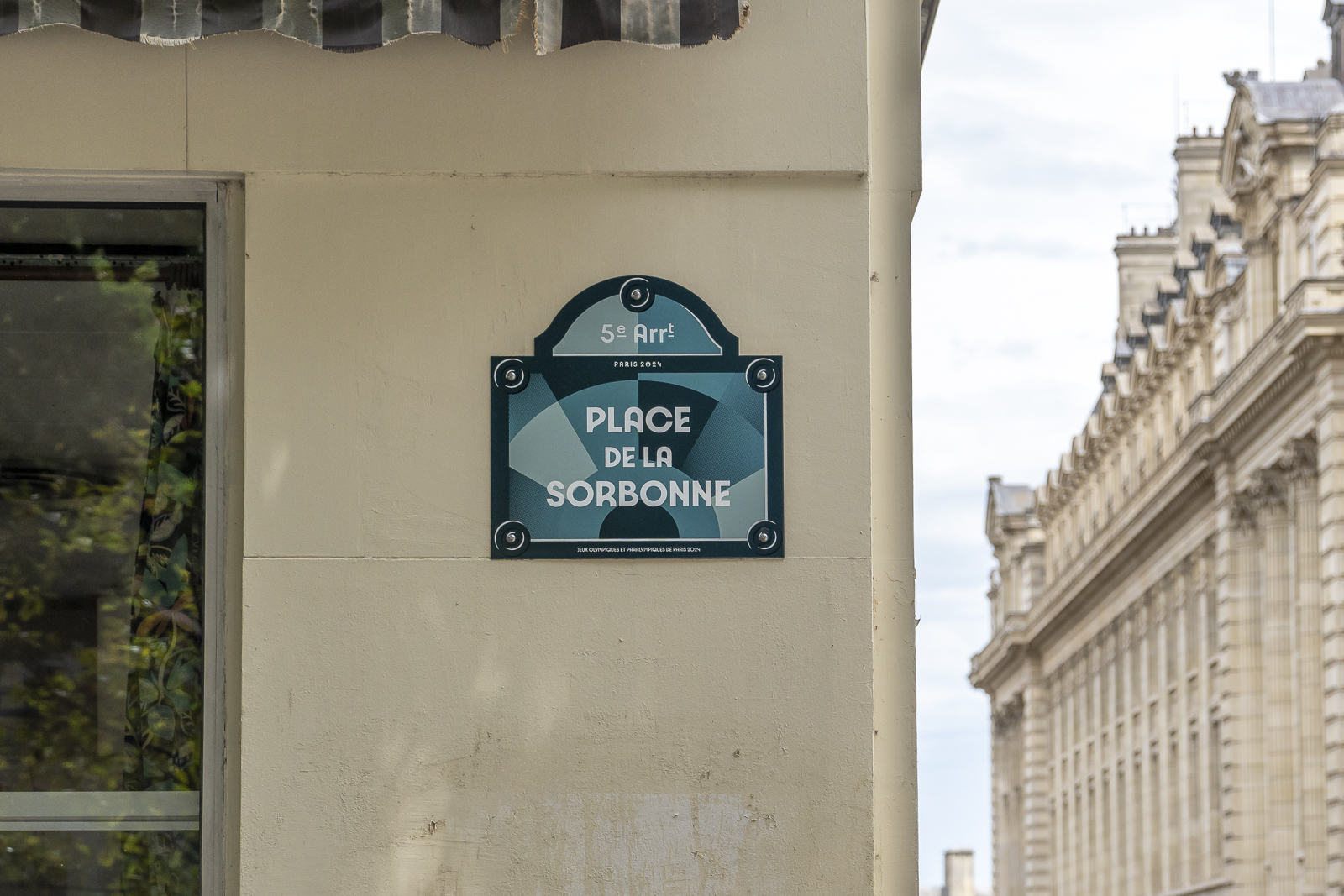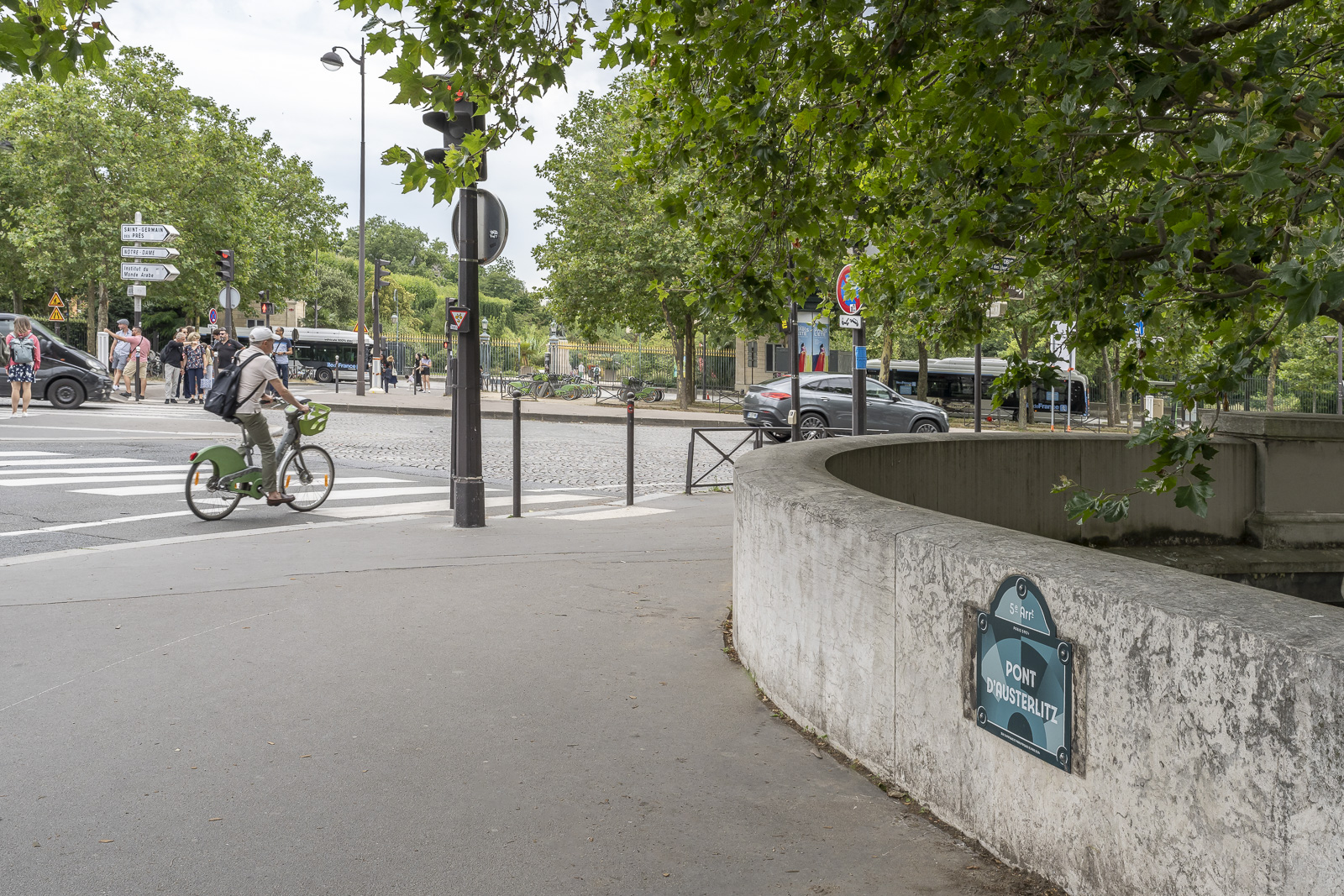Content
Cette page est aussi disponible en français
Some 40 street signs will be replaced to reflect the colors of the Paris 2024 Games. This beautiful Olympic legacy awaits discovery as you stroll around the capital. Don’t forget to look up!
The athletes participating in the Olympic marathon will set off from the Place de l’Hôtel de Ville-Esplanade de la Libération (Paris Centre) on August 10. Therefore, it’s only fitting that the very first street sign bearing the Games’ theme has been installed at this location.
Other competition venues, emblematic locations of the Paris 2024 Games or the torch relay will soon display these new plaques - some forty in all, covering every arrondissement. These new plaques are part of the Games' legacy in Paris.
For example, three plaques have been placed on either side of the Pont d'Austerlitz, which will be the starting point for the opening ceremony, or a plaque celebrating the tennis, boxing and wheelchair tennis venue at Roland-Garros (16th arrondissement). Not forgetting the Arena Porte de la Chapelle, place Alice-Milliat (18th)!
The ‘Héritages’ plaques, produced by Lacroix Signalisation (Auvergne-Rhône-Alpes), showcase the visual identity of the Paris 2024 Games. Drawing inspiration from the Art Deco movement and symbols of historical and urban heritage, these plaques are made of enamelled iron and are fired at 860°C, mirroring the process used for conventional plates.
Where can I see the new plates?
Plaques sites:
-
Champ-de-Mars (7th): judo and wrestling competition site
-
Esplanade des Invalides (7th): Olympic marathon and the Marathon for All finish line
-
On either side of the Alexandre-III bridge, swimming, marathon, triathlon and para-triathlon competition site (installation after dismantling)
-
On either side of the Alexandre-III bridge, swimming, marathon, triathlon and para-triathlon competition site (installation after dismantling)
-
Near the Eiffel Tower (7th): beach volleyball and blind football competition site (installation after dismantling)
-
Place de la Concorde (8th): BMX freestyle, breaking, skateboarding and 3x3 basketball competition site
-
Grand Palais (8th): fencing and armchair fencing competition site
-
Place de l’Opéra: part of the Olympic marathon and the Marathon for All route
-
1, rue d’Alsace (10th): part of Olympic torch relay route
-
rue Oberkampf (11th): part of cycling routes
-
Pont d’Austerlitz (12th): opening ceremony starting point
-
Bercy Arena (12th): basketball and wheelchair basketball competition site
-
Arena Paris Sud (15th): weightlifting, handball, table tennis, boccia, goalball and table tennis competition site
-
Parc des Princes (16th): football competition site
-
Roland-Garros (16th): tennis, boxing and wheelchair tennis competition site
-
Pierre-de-Coubertin stadium (16th): rhythmic gymnastics and trampoline teams training site
-
On both sides of the Pont d’Iéna: opening ceremony arrival point
-
Max-Rousié gymnasium (17th): boxing teams training site
-
Bertrand-Dauvin gymnasium (18th): modern pentathlon teams training sites
-
Arena Porte de la Chapelle (18th): the only new facility built in Paris for the Paris 2024 Games
-
Jules-Ladoumègue sports center (19th): training site
-
Georges-Vallerey swimming pool (20th): swimming, marathon swimming and triathlon training site
-
Rue du Télégraphe (20th), at the exit of the Télégraphe metro station: road cycling races pass through. Rue du Télégraphe is the highest point in Paris, reaching 128.5 meters above sea level
-
Place de la Sorbonne (5th): historic site of the 1894 Olympic Congress, marking the birth of the modern Olympic Games and the creation of the International Olympic Committee
-
Luxembourg Gardens (6th): In 1900, the ‘long palm’ competition of the second edition of the Summer Olympic Games took place in the Senate’s palm room. Additionally, the torch relay passed through the garden
-
Rue Oudinot (7th): birthplace and residence of Pierre de Coubertin
-
Jacques-Anquetil velodrome / Pershing stadium (12th): emblematic 1924 Paris Games venue
-
Insep (12th): the Olympic champion factory
-
French National Olympic and Sports Committee headquarters
-
Rue Marguerin (14th)
-
Quai Saint-Exupéry (16th): Basque pelota court during the 1924 Paris Games
-
Place du Trocadéro and 11-Novembre (16th)
-
Rue de Rivoli (Paris Centre): part of the Olympic marathon and the Marathon for All route
We want to hear from you!
Was this information useful to you?
Please note: we cannot reply via this form (please do not include any personal information).
